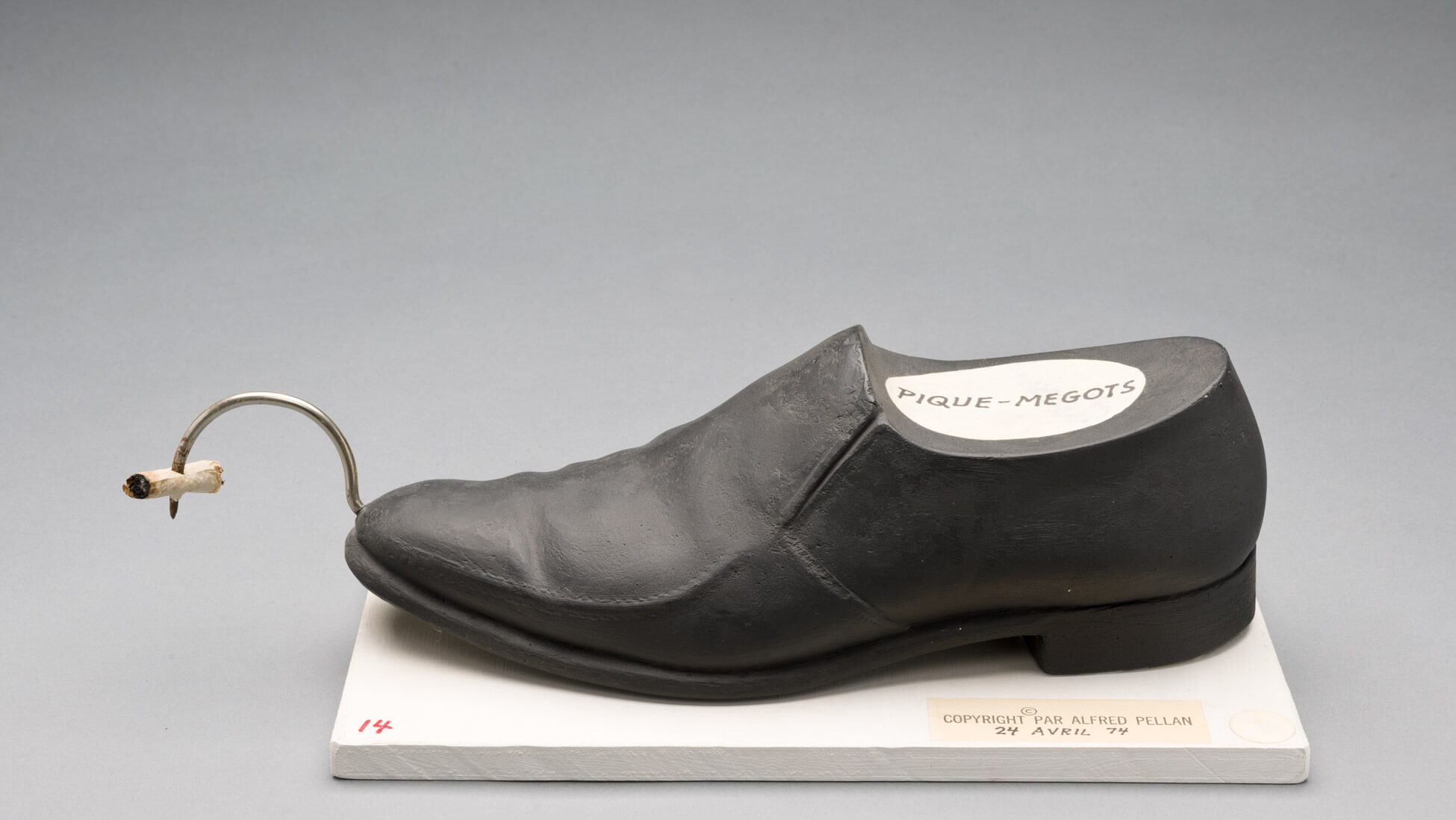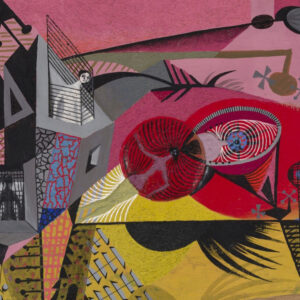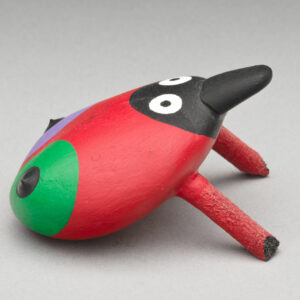Pique-mégots 1974

Alfred Pellan, Pique-mégots, 1974
Leather shoe, plaster, metal, paper, tobacco, plywood, and paint, 11.2 x 35.5 x 15 cm
Musée national des beaux-arts du Québec, Quebec City
Alfred Pellan made a series of shoe-objects, all based on the same shoe-shaped plaster mould and incorporating various household items. He drew heavily on bawdy humour: Pique-mégots, for example—which translates to “butt picker” in English—includes a cigarette butt impaled on a hook that protrudes from the black leather toe. The shoe sculptures are life-sized and realistic, which makes the playful additions seem especially uncanny. Pellan often wrote out the title directly on the surface of each piece, adding another layer of meaning.
The artist conceived this series in 1974 for an exhibition held at the SAPQ gallery in Montreal. These works are another example of his connection to Surrealism, whose adherents believed that by taking an object out of its original context, one could reframe it in the context of new relationships and thereby expand our conception of reality.
-
Alfred Pellan, L’exhibitionniste (The Exhibitionist), 1974
Patent leather shoe, plaster, plywood, ink, and paint, 15 x 32.5 x 15.4 cm
Musée national des beaux-arts du Québec, Quebec City
-
Alfred Pellan, Veuve joyeuse (Merry Widow), 1974
Leather shoe, plaster, offset on paper, plywood, and paint, 21.6 x 42.7 x 20.2 cm
Musée national des beaux-arts du Québec, Quebec City
-
Alfred Pellan, Pour masochiste (For Masochist), 1974
Leather shoe, plaster, latex, metal, plywood, and paint, 16.1 x 46.7 x 15.2 cm
Musée national des beaux-arts du Québec, Quebec City
-
Alfred Pellan, Pince-fesse, 1974
Leather shoe, plaster, metal, plywood, and paint, 81.8 x 29 x 15.3 cm
Musée national des beaux-arts du Québec, Quebec City
There are parallels between this work and Mini-bestiaires (Mini-Bestiaries), 1971–75: both centre an object as the concrete embodiment of the artist’s ideas, thoughts, and experience. Along with reconfiguring the meaning of the shoes by placing them in a new context, Pellan referenced the erotic body in this series, particularly in works such as Pince-fesse, L’exhibitionniste (The Exhibitionist), Veuve joyeuse (Merry Widow), and Pour masochiste (For Masochist), all 1974. These objects reveal the artist’s playful character, but their main purpose seems to be provocation.
In Pince-fesse and For Masochiste, the titles (and the metaphorical action the viewer imagines through them) gesture toward sexual content. The Exhibitionist and Merry Widow are less subtle: the large phalluses attached to the shoes, as well as the picture of a nude woman in the latter work, leave no doubt as to their intended meaning. While Pellan is indeed presenting footwear in a new context, these associations are not as outlandish as one might think, since the shoe itself may be anchored in the subject of a fetish. The artist could simply be completing the connection between the foot and eroticism that has already circled the edges of the viewer’s unconscious mind.
In that respect, Pellan’s erotic shoe-objects refer to tensions beneath the surface—after all, many societies impose strict limits upon the expression of sexual desire. The human body is regulated and controlled by shared cultural codes that determine which behaviours are considered “appropriate.” Pellan’s erotic shoes question those limits by playfully addressing and exposing sexual desires and fantasies.
These shoe-objects remind us once again of the importance of freedom—freedom of expression and freedom from social constraints. They remind us of the many times Pellan used erotic images and symbols to fight censorship. His sexually charged sculptures take the direction of a “positive and playful, altruistic and subversive exaltation of love that is resolved on a social level through scandal and revolt.”

 About the Author
About the Author
 More Online Art Books
More Online Art Books
 Acknowledgements
Acknowledgements